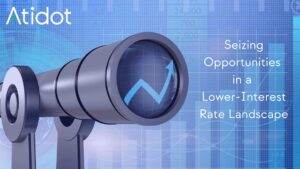Life insurance margins continue to be squeezed due to the plunging interest rates, as well as the precipitous drop in the stock market and global economic crises. The much-awaited rise in interest rates has not materialized, and recent events such as COVID-19 and high unemployment rates make it clear that they will continue to plunge. As a result, it is crucial for life insurance providers to find new ways to maximize the revenue opportunities available to them, such as locating current policyholders who possess the potential for substantial upsell, and next-gen customers that are looking for personalization, all are likely to purchase better life insurance and become a Very Important Policy (VIPs).
A tailored approach for these VIP customers will be exponentially valuable in the current turmoil. While insurance companies are aware of who their current important policyholders are, how can they better understand and identify the policies with the most potential? Once identified, how can they optimize methods for best engaging and converting them? The answer lies in optimizing the data they already have to generate insights on the life cycle of their policyholders. Understanding and predicting policyholder behaviors and alerting the agent at the right time to a potential change or discrepancy in the customer’s profile could be a saving grace for life insurance providers in times of economic uncertainty.
Looking Inward for New Revenue
Now more than ever, insurance companies must pay more attention to the untapped potential in their book of business. Interest rates have dropped significantly, drastically affecting the assets and liabilities of providers. As lower interest rates make the insurance company’s products less attractive, sales continue to drop, further reducing the revenue available for investments.
While insurance companies may choose to address problems in the market by looking for new opportunities for growth to ensure efficiency and profitability, they should be focusing on optimizing what they already have – starting with their book of business.
Finding Gold in a Mine of Data
How can carriers find untapped segments? The answer already lies at their fingertips. The vast amount of data they already have can assist them in clearly identifying the opportunities for upsell.
New technologies can transform the data into actionable insights and prediction data, enabling providers to empower their agents to address the unmet areas and optimize their books of business.
Why is it still so hard to identify the most important users? Many agents are still largely relying on subjective memory and personal experience rather than basing actions on statistics and data.
By having amassed massive quantities of data, life insurance providers have the ultimate big picture of their customers. Consumers and providers, however, lose out when carriers don’t zoom in on segments and nano-segments and therefore fail to identify opportunities for upsell. Even when potential upsell is identified, if agents are not informed with actionable insights, none of it matters.
Insurance carriers know a lot about every policyholder based on the data they hold. Utilizing predictive analytics to dig into the data and identify the opportunities for upsell ( i.e.,the underinsured policyholders) can create a win-win-win situation for policyholders, agents, and carriers alike. The segments that can be revealed include those that answer to the following questions:
- Has a policyholder just moved into an affluent suburb with excellent schools? Successful predictive analytics could indicate that this family should belong in another segment, as predictive analytics calculates that they will likely move into a higher income neighborhood, buy a more expensive car, etc.
- What if a married father of 3 starts paying rent for a 1 bedroom home. Could this mean that a divorce is at play? If so, his policy would need to be fixed and redirected to benefit kids, and no longer his wife.
- Does the policyholder enjoy skiing? If a policyholder has a preference for extreme sports and has taken out a policy to cover skiing holidays, they would be segmented into a specific group. If within that group, 90% of them have a certain plan, but 10% still don’t, this is a prime and untouched opportunity for agents to target that 10%.
Empowering their agents with information that would identify their underinsured policyholders who have a great potential for upsell can maximize revenue on their book of business in the long run. To achieve this goal, they need to turn inwards and draw on the raw data they already have.
The Right Touch at the Right Time
Tapping into the life-cycle of a policyholder and alerting the agent at the right time to a potential change or discrepancy in the customer’s profile could be a saving grace for life insurance providers in economic uncertainty.
On top of this, the client receives more personalized attention: 88% of insurance consumers demand more personalization from providers, but until now providers haven’t had a reliable way to provide personalized service. Any attempts to provide this service, such as frequent check-ins, annoy rather than provide value to the customer.
Once the customer’s growth potential is identified, agents must also know how to maintain them.
This critical interaction, which sometimes lasts no longer than 5 minutes, could make or break an agreement. Knowing when to contact the customer is crucial. Insurers should be careful not to offer the wrong policy to the wrong person at the wrong time. This is not just to avoid wasting effort and resources,rather, they could be risking the lifetime value of a customer, as the customer may be reminded that they don’t necessarily need the policy and thus cancel it.
Some insurance companies are still unaware of the most accessible and lucrative solution: finding the potential within their book of business through accurate data collection and processing the data they already have. Using predictive analytics to identify the core policyholders who are underinsured, is a win-win for both agents and clients.



 min read
min read 


 min read
min read
 min read
min read


